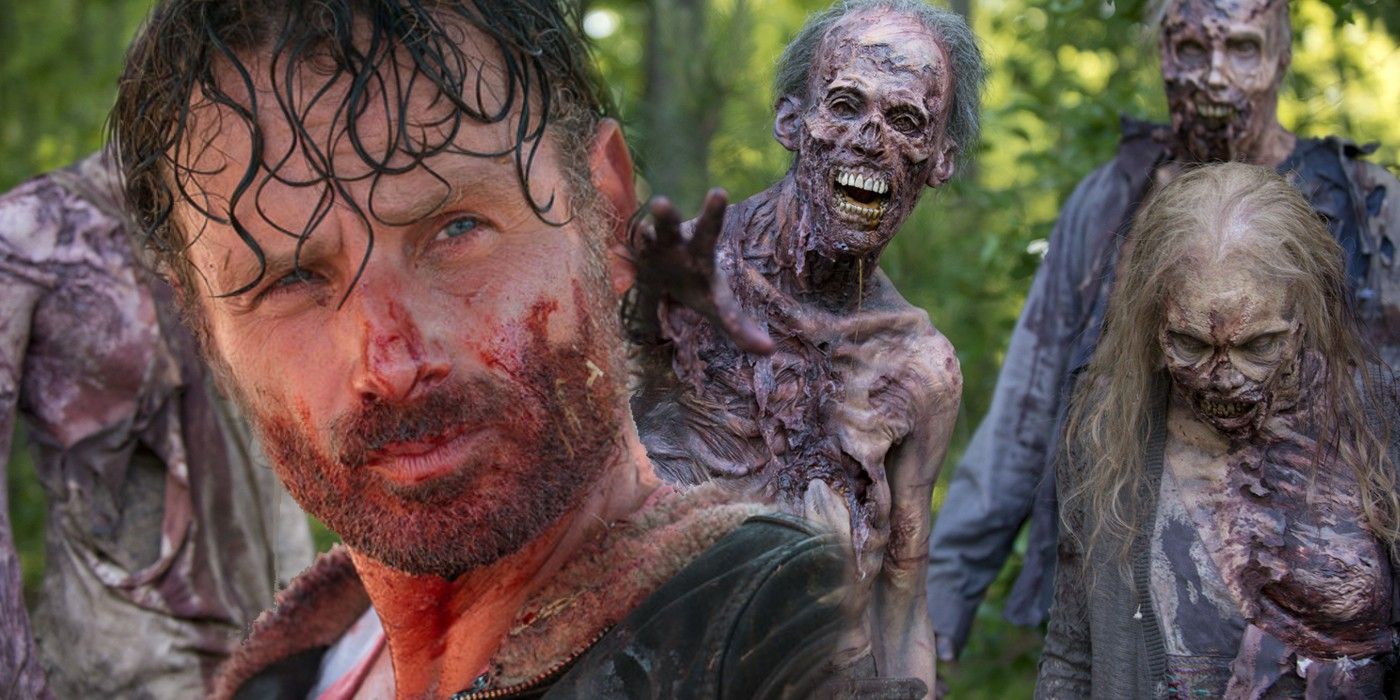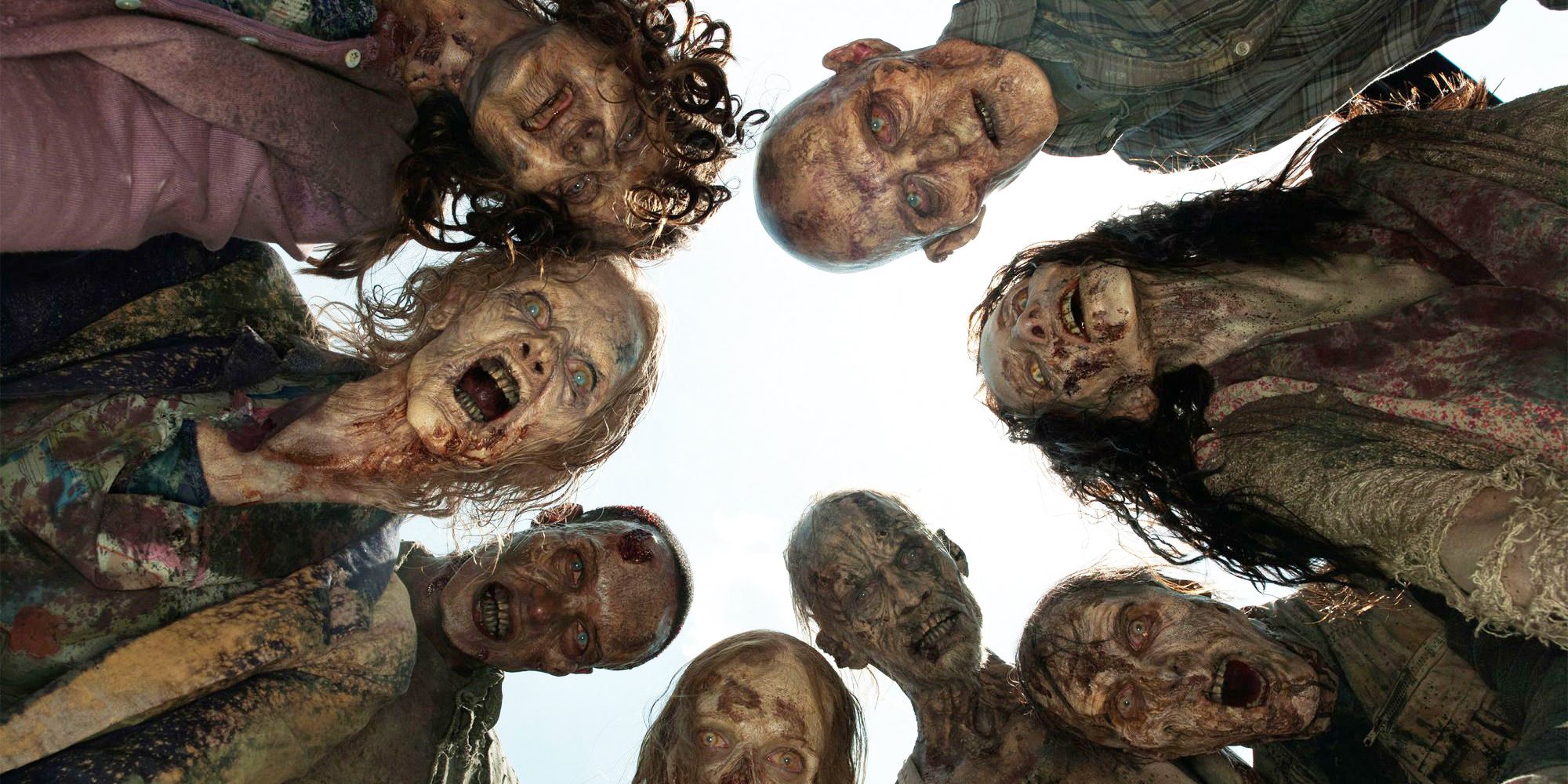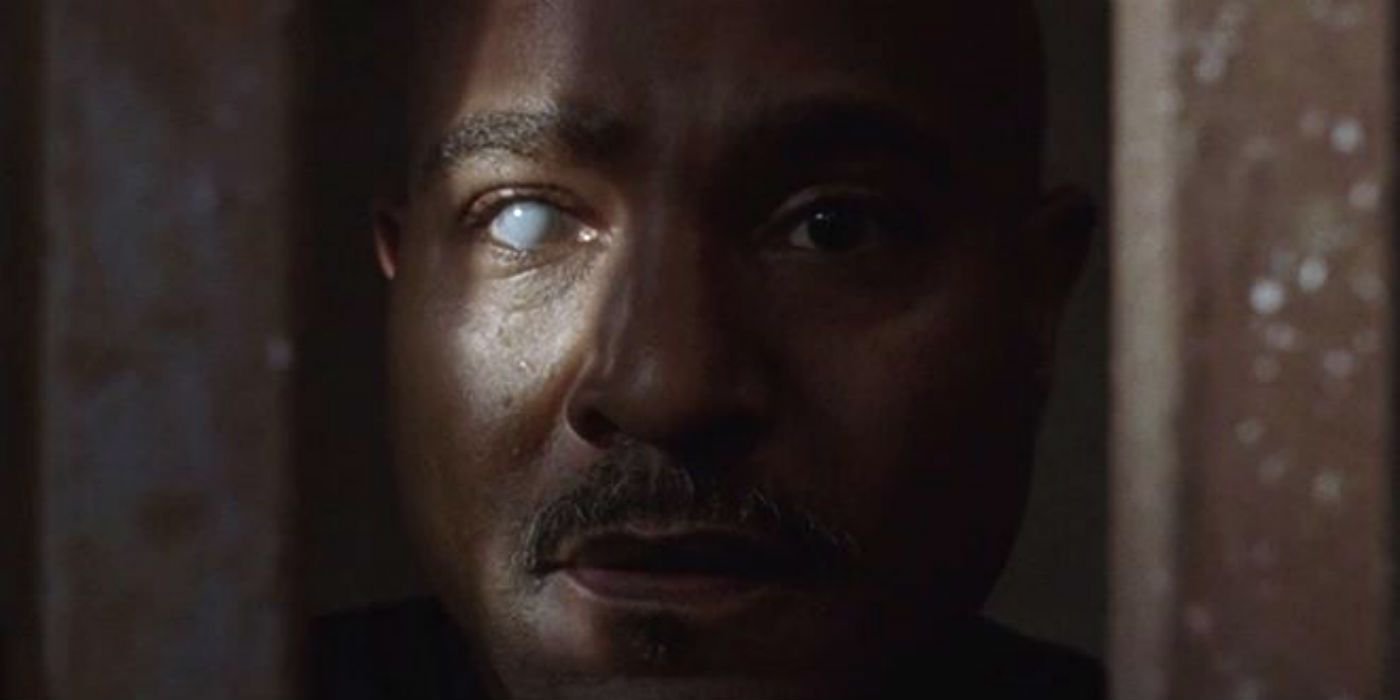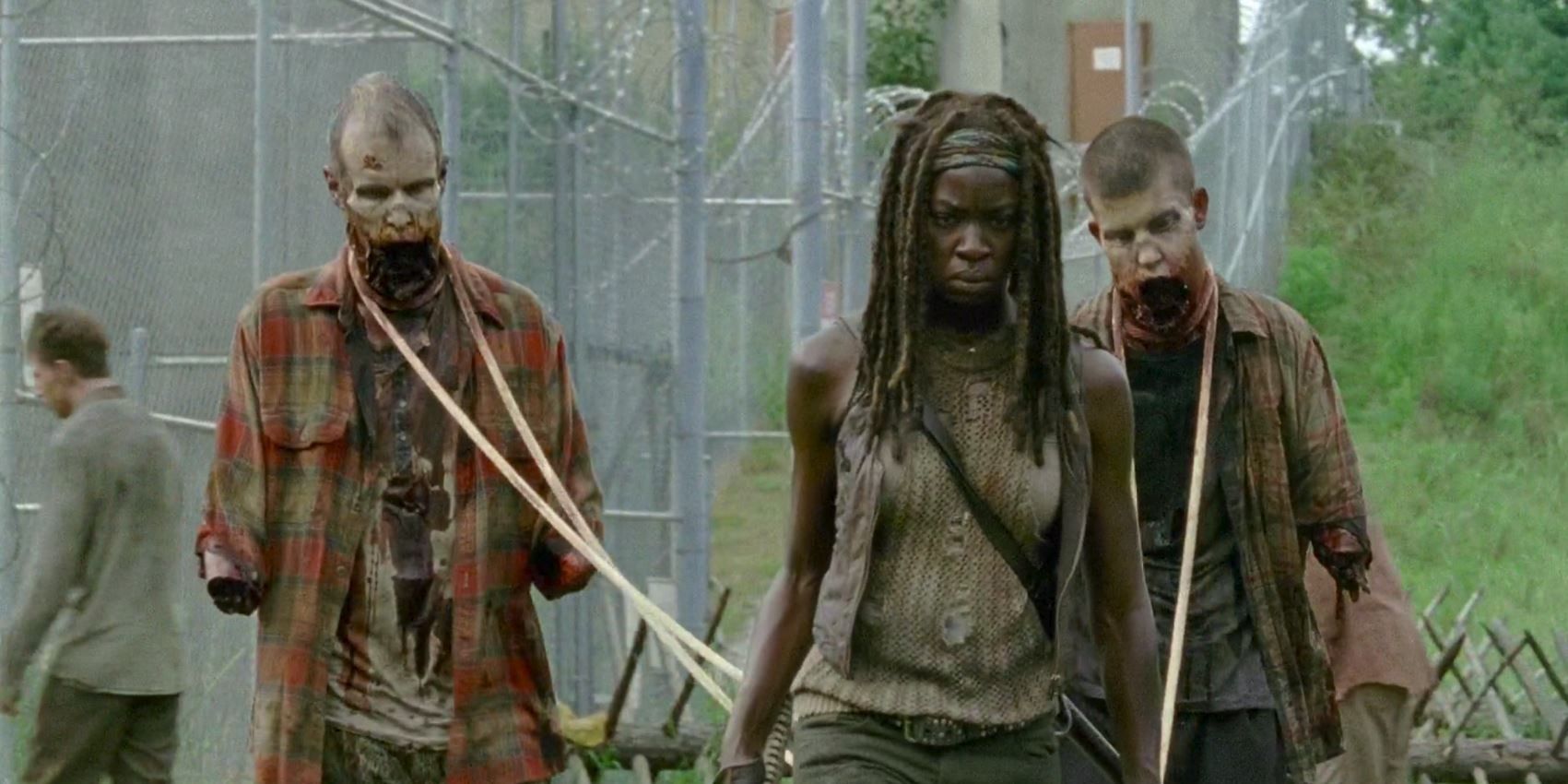
Here’s how The Walking Dead doesn’t always follow its own undead guidelines. “What’s the point of expecting realism from a show about zombies?” is a question many fans of The Walking Dead will be well-accustomed to hearing, and there’s certainly a logic behind that statement. In a TV series where the dead come back to life, why ask too many questions? But even in the fantastical world of the zombie apocalypse, boundaries are set. The audience are willing to accept the undead rising, but if Rick began breathing fire and flying, The Walking Dead would fall on its face, crossing the lines set by its own rulebook. While dragon-Rick might be an extreme example, the notion demonstrates why even the most ridiculous TV series must adhere to its own parameters of reality.
Both in its original comic book form and the AMC adaptation, The Walking Dead offers a more grounded approach to the zombie outbreak. Opting to not even explain the origin of the infection, The Walking Dead focuses on the psychological impact of a world ravaged by mobile corpses and proves that the real enemy will always be other humans. The Walking Dead extends its uniqueness to the method by which a character can be afflicted with the virus, shaking up the “Romero rules” that have defined the genre since The Night of the Living Dead in 1968.
But where Robert Kirkman tries to put his own spin on those classic guidelines, The Walking Dead sometimes becomes guilty of contradiction, breaking its own in-universe rules. Some of these are easy to overlook, but others immediately feel jarring, marring storylines with broken logic and discarded science.
The Walking Dead’s Infection Rules

Known as the father of the zombie movie genre, George A. Romero set out the initial logic for a zombie virus, and this time-honored tradition is mostly followed by The Walking Dead. Zombies are slow and shuffling, only stopping their hunger for flesh when the head is destroyed. Being bitten or scratched by the undead will turn a living person into a zombie over time, but any member of the recently deceased is destined to rise again with a hankering for human meat. Where The Walking Dead adds a little extra spice of its own is in the dormant nature of the virus inside everyone. Rick Grimes and his fellow survivors discover that everybody is already infected with the zombie virus, but the pathogen only comes into play upon death, reanimating the person as the emotionless, rotting creatures horror fans know and love.
There’s no way back for someone after being bitten in The Walking Dead, that is unless the wound is on a body part that can be promptly cut off, and the time between being attacked and coming back varies hugely from person to person. Naturally, Robert Kirkman has been asked about the mechanics of his zombie virus on numerous occasions, and The Walking Dead‘s creator has consistently stressed that it is not the virus that kills. When a character is bitten, what leads to death is the generic (albeit severe) infection and fever that comes from being wounded by the mouth of a corpse. The injury kills a person in the way that any grievously infested wound can, but only after death has already occurred does the latent virus come into play and resurrect the victim as a mindless flesh-eater.
Why Walking Dead’s Undead Rules Are Inconsistent

The problem is that The Walking Dead presents itself in a way that directly contradicts the method of transmission described above. The idea of zombie bites being fatal simply because there’s so much bacteria in a walker’s mouth is comparative to a komodo dragon, and explained in more detail by Scientific American. Essentially, komodo dragons are rife with so much germ-y nastiness that a bite from one can be fatal, without any presence of venom or poison. Zombies work on a similarly grim principle – their mouths are so manky that death is inevitable, but there’s no virus actually passing from the biter to the victim.
But how many times has a character in The Walking Dead covered themselves in zombie guts to escape detection? Surely if the undead were so damn filthy, being smothered in gore would have a much higher mortality rate. Instead, the only character to become seriously ill from the “zombie camouflage” tactic is Gabriel, whose infection was treated by antibiotics. Admittedly, he was left blinded in one eye by the experience, but Gabriel’s illness behaved like a more a regular infection instead of an inherently fatal zombie bite, even though they should’ve been essentially the same. The Walking Dead might argue that bite infections are much more serious that a bit of zombie gut finding its way into the bloodstream, but this theory is contradicted by the Saviors in season 8. Ever the sadist, Negan attacks Rick’s people with weapons dipped in walker entrails and succeeds in killing several protagonists, most notably Tobin from Alexandria.
In addition to covering themselves in zombie guts, The Walking Dead has shown characters sliced with blades recently used on zombies, people being splattered in blood while bashing a zombie’s head in, and Shane getting zombie saliva in an open wound. If a zombie bite was so infectious as to boast a near-flawless mortality rate, Gabriel and many more characters should’ve died long ago. Moreover, bites from zombies who only recently turned would be relatively harmless. A zombie that has been undead for a few seconds wouldn’t have a mouth full of bacteria and gunk, so their bite shouldn’t be much different from that of a living person. Alas, in The Walking Dead, newbie bites are as fatal as those from dyed-in-the-wool walkers.
The Walking Dead’s Characters Act Like It’s The Virus That Kills

Robert Kirkman assures fans that Walking Dead characters do not die from the zombie virus because the virus is inside of them already, but this isn’t how anyone acts on-screen. Paranoia is a key tenet of The Walking Dead – any time someone returns after narrowly escaping the undead, they’re rigorously examined for bites and scratches. If a bite is discovered, then the person’s fate is sealed – they’re as good as dead. This contradicts The Walking Dead‘s zombie infection rules. Zombie victims are treated like those who suffer deadly snake bites – a poisonous substance has been transferred to them and there’s no cure. But if these bites only cause death through fever, infection and blood loss, characters in The Walking Dead should surely be acting very differently. Why be so paranoid checking for potential bites when a particularly bad cold or a nasty case of the runs can also be deadly. Oddly enough, the audience never see Rick and Daryl checking strangers for any signs of diarrhea.
Also strange is how bitten characters are almost immediately doomed with zero chance of survival. The Walking Dead relies on the premise that medical care is hard to come by in the apocalypse. Those zombie bite fevers might have been treatable back when the world was intact, but out in the open with no doctors or antibiotics, a simple infection is always fatal. That premise works well enough in the early seasons, but the closer The Walking Dead gets to rebuilding civilization, the more the inconsistency is highlighted. Alexandria, the Sanctuary and Hilltop all have decent medical facilities, but none show any real interest in trying to treat those unlucky enough to get bitten. This plot hole will become even more glaring when the Commonwealth are introduced – a massive community harboring resources on par with pre-outbreak hospitals that could surely treat most fevers and infections.
And there are other instances where the characters of The Walking Dead act like a zombie bite is more akin to a poisoning than a dirty physical wound. When Rick’s people encounter cannibals, the villains capture and take a bite out of Bob (or Dale in the comic books). In both versions of the story, the prisoner reveals a secret zombie bite, scaring the cannibals into believing they’d eaten “infected” meat. Of course, this shouldn’t be too much of a big deal since everyone already has the virus, but the characters act like they’re at risk of contracting something similar to rabies or hepatitis. On several occasions in The Walking Dead, a character has had a bitten limb chopped off to save their life. This makes sense, as amputation is a genuine last resort for untreatable infections, but Rick and his friends believe that if the chopping doesn’t happen within minutes of the bite, then it won’t work. Surely if a bite victim’s cause of death really was a severe fever and infection, there’d be plenty more time to act.
The Walking Dead claims that it’s not the virus that kills you, but all evidence on-screen suggests otherwise. Virtually every character acts like the zombie virus is a type of poison or sexually-transmitted infection that can be passed from one to the other, and this is most likely done to reap the benefits from two separate sets of rules. By acting like the zombie virus is the killer, The Walking Dead creates more tension whenever a zombie is around, and a sense of suspense over whether someone might be hiding a bite. But by claiming the virus is already inside everyone, The Walking Dead ensures its zombie population is well-maintained at all times.





